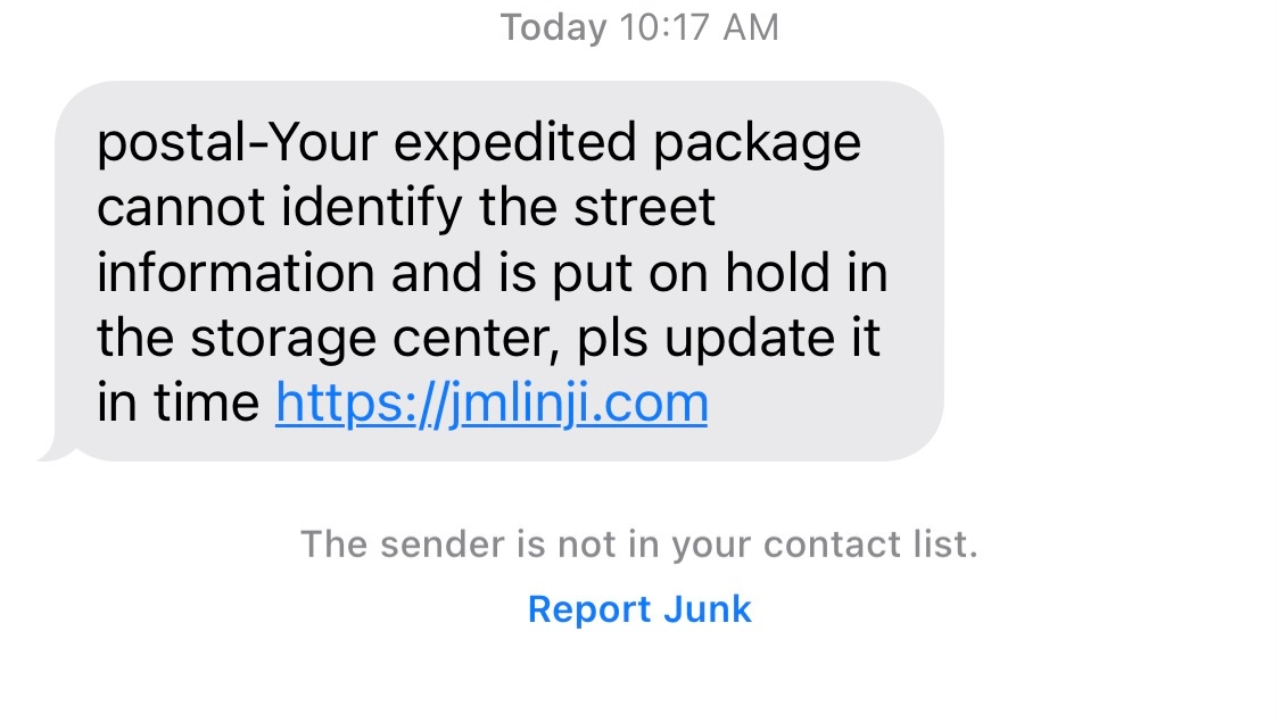
The Rise of Black Friday Shipping Scams
With Black Friday and the holiday season upon us, online shopping and package deliveries are at an all-time high. While this time of year offers great deals and conveniences, it’s also prime hunting season for scammers who exploit the surge in online orders. One of the most common tricks is sending fake shipping alerts that appear to be from trusted carriers like UPS, USPS, or FedEx. These seemingly harmless messages often include a link to “track your package” or “resolve a delivery issue.” But clicking on these links could lead you to a scammer’s website designed to steal your information or install harmful software on your device.
How These Scams Work
Shipping scams often start with a text or email claiming to be from a reputable shipping carrier. The message may say something like, “There’s an issue with your delivery” or “Your package is on hold; please click here to resolve.” Scammers know that holiday shoppers are expecting shipments, so they aim to catch you off guard with an urgent alert that prompts you to act quickly.
The problem is that these links don’t take you to the official UPS, USPS, or FedEx websites. Instead, they redirect you to fake websites designed to look like the real thing. Here, you might be asked to provide sensitive information—like your name, address, or even credit card details—or to download a file that contains malicious software.
Types of Black Friday Shipping Scams to Watch Out For
During the holiday season, keep an eye out for these specific types of shipping scams:
- Fake Tracking Notifications: You receive a message that looks like a tracking alert with a link to view your package’s status. The link, however, leads to a fake tracking page designed to harvest your personal information.
- "Delivery Issue" Messages: Scammers send messages saying there’s a problem with your package and a fee is required to complete delivery. They might ask you to enter your payment details, claiming it’s a small charge to get your item delivered.
- Phishing Emails and Spoofed URLs: Some scammers send emails that mimic official UPS, USPS, or FedEx communications, complete with logos and official-sounding language. However, the URL in the message is often slightly altered (E.G., “ups-supports.com” instead of “ups.com”) to trick you.
Recognizing the Red Flags
Learning to identify scam shipping messages is essential to staying safe. Here are a few red flags to watch out for:
- Check the Sender’s Details: Scam texts and emails often come from strange email addresses or phone numbers. Official shipping companies won’t send messages from a random sequence of numbers or letters.
- Look for Grammatical Errors: Many scam messages contain odd phrasing, poor grammar, or spelling mistakes. Official carrier communications tend to be professional and free from errors.
- Beware of Urgent Language: Phrases like “Act Now” or “Immediate Action Required” are used to create a sense of panic. Scammers want you to react without thinking, so be cautious of any message that makes you feel pressured.
- Suspicious Links: Hover over any links (without clicking) to see the actual URL. If the URL doesn’t look official or contains extra words or numbers, it’s likely a scam.
Steps to Take if You Receive a Suspicious Shipping Text or Email
If you get a message that seems like a scam, here’s what you should do:
- Don’t Click the Link: Avoid interacting with any suspicious links. Even clicking once can lead to harmful sites or trigger malware downloads.
- Verify Directly with the Carrier: If you’re expecting a package and are unsure about a message, go directly to the official UPS, USPS, or FedEx website. Enter your tracking number to verify your shipment’s status without using any links from the suspicious message.
- Report the Scam: If you receive a fake message, you can report it to the Federal Trade Commission (FTC) or to the carrier’s fraud department. Many shipping companies have pages dedicated to helping users report fraudulent messages.
How to Protect Yourself from Holiday Scams
Staying vigilant is the best way to avoid these scams. Here are some tips to help keep your information safe:
- Enable Two-Factor Authentication: Adding two-factor authentication (2FA) to your accounts provides an extra layer of security. This way, even if someone tries to access your accounts, they’ll need a second form of verification to get in.
- Keep Software Updated: Regularly updating your devices ensures you have the latest security patches, which can protect you from malware that might be triggered by scam links.
- Use a Members 1st Credit Card for Online Purchases: Generally, credit cards offer more fraud protection than debit cards, and if you buy an item with your eligible Members 1st credit card, you also have access to a suite of free protection benefits. To learn more, click here.
- Install a Reliable Anti-Malware Program: Anti-malware software can help identify and block malicious downloads if you accidentally click on a bad link.
Stay Safe and Enjoy Your Holiday Shopping!
Black Friday and the holiday season should be a time for joy and excitement, not stress about scams. By staying informed and vigilant, you can enjoy your holiday shopping without falling victim to shipping fraud. Remember, if a message looks suspicious, it’s always best to verify directly with the carrier or simply ignore it. Taking a few extra steps can save you from potentially costly scams and help ensure a safer holiday season.


.jpg)
.jpg)
